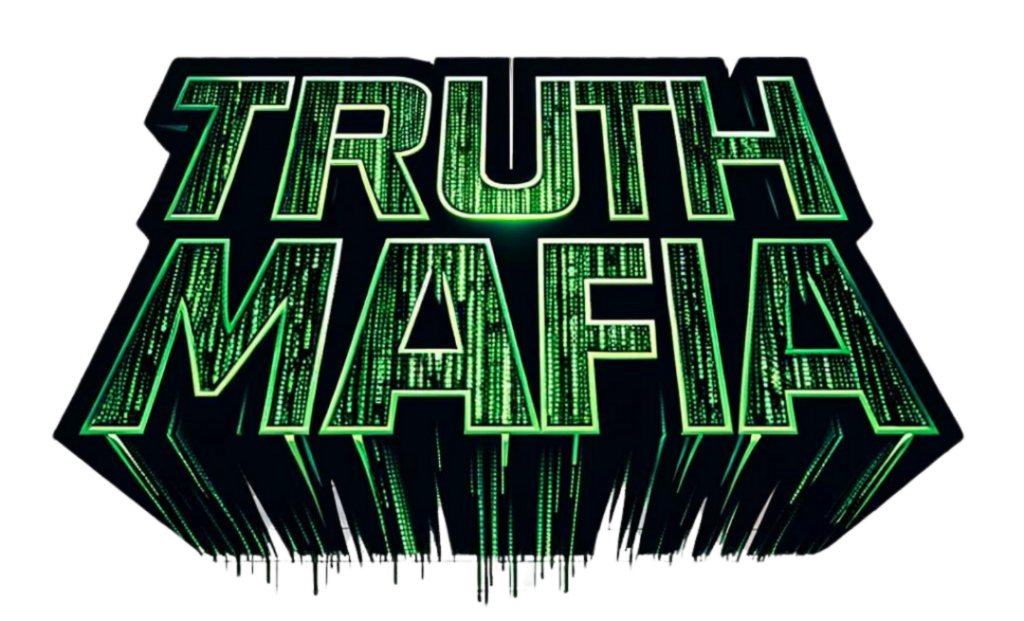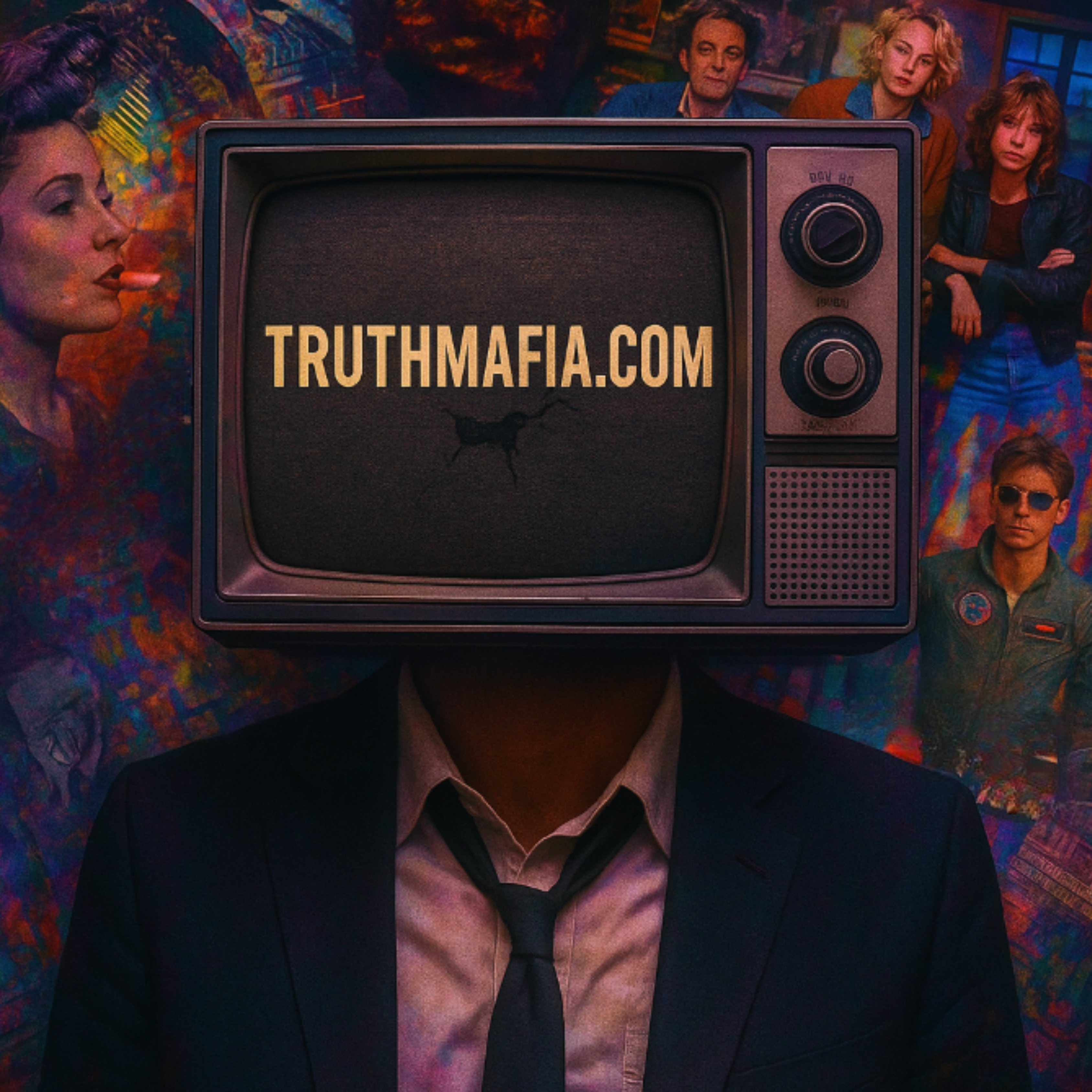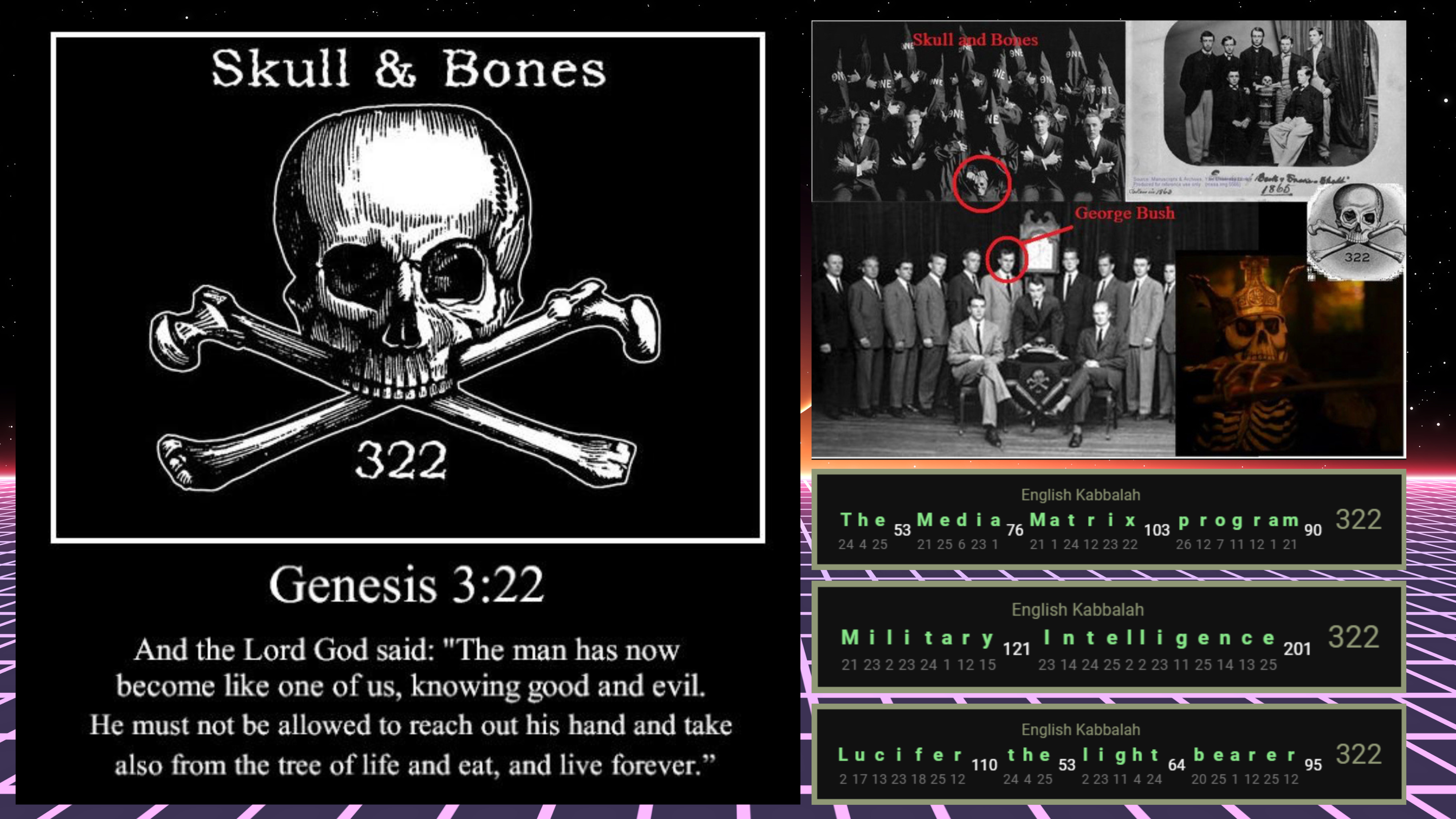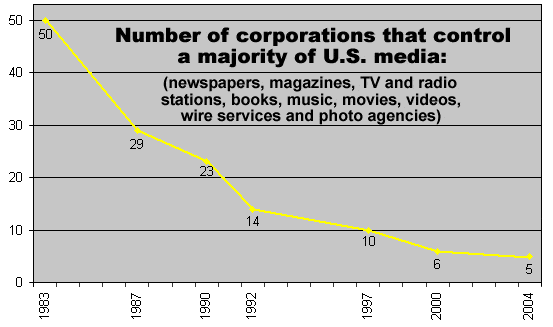
The Media Matrix: Who Controls the Narrative Controls the Masses by Tommy Truthful
Mainstream media stands as the most influential weapon in the hands of the elite to influence public perception. It constructs beliefs, steers social behavior, and dictates what is seen as standard or appropriate. This piece explores how mass media operates by examining the ideas of leading theorists, the hierarchy of control behind it, and the strategies it employs to reveal its actual function within society.
Let’s look into the Media Matrix Program, which is not just a catchy phrase, it’s a matrix within a matrix, a layered simulation designed to control perception, shape belief, and program the subconscious mind. The very phrase itself is encoded with occult significance:
The media matrix program = 322 in English Kabbalah Gematria
This exact value matches:
Military intelligence = 322 in English Kabbalah Gematria
Lucifer the light bearer = 322 in English Kabbalah Gematria
Now think about that for a second. Lucifer is described as the Prince of the Airwaves. That includes radio, television, the internet, music, and all forms of mass communication. He operates through frequency. He controls what we hear, what we see, and how we interpret this reality. He is the architect of this secondary matrix, a coded simulation over the natural one.
And then there’s 322, the most infamous number tied to Skull and Bones, also known as The Brotherhood of Death. This elite secret society has produced Presidents, CIA directors, and countless figureheads who shape global narratives. So when you see the number 322, you’re looking at the signature of the architects of modern propaganda.
Now consider Genesis 3:22:
“And the Lord God said, ‘The man has now become like one of us, knowing good and evil. He must not be allowed to reach out his hand and take also from the tree of life and eat, and live forever.’”
This verse has layers. It hints at the transhumanist agenda, a forbidden crossing between man and god, biology and machine. It is the merging of iron and clay, just as we see with AI, synthetic biology, and neural interface tech being pushed today.

It is the Luciferian dream of eternal life, but artificially attained.
Let’s go deeper.
Operation Mockingbird = 322 in Reverse Ordinal Gematria

This CIA operation infiltrated and took control of mainstream media outlets. And if you think that ended decades ago, you’ve already fallen for the first spell.
Even the core phrase media matrix = 32 in Chaldean Gematria

That number 32 is ancient and sacred. It represents the Ten Sephiroth and the 22 Paths on the Tree of Life in Kabbalah. In other words, the entire mystical framework of reality—encoded in the word “media.”
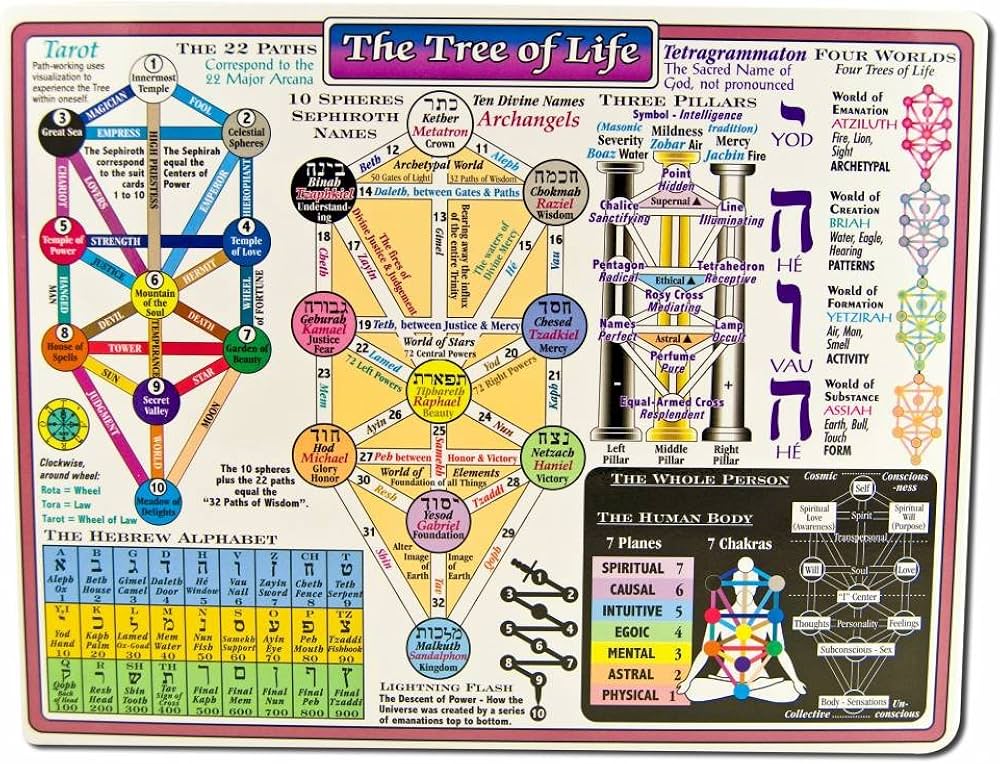
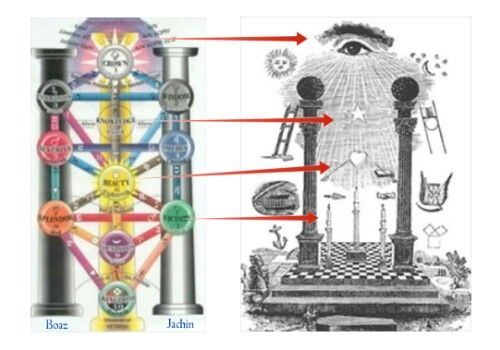
We also see:
Media = 32 in English Ordinal

This is no accident. The number 32 is also linked to the Nephilim, the offspring of human women and fallen angels, the original hybrid beings, a theme now being echoed in transhumanism and genetic manipulation.

I believe that media, including television and the Internet, and the World Wide Web, which was created at CERN, is a form of fallen angelic technology taught to humans by the descendants of the Nephilim bloodlines. These thirteen bloodlines are said to run the world today, with their ancestry tracing back to the Nephilim. Through genetic manipulation, they have bred out physical characteristics of giantism to better fit into society. There are claims that some pure-blooded Nephilim still exist beneath our feet in the inner Earth. While I cannot confirm this, as I have never been there, there is certainly a significant amount of evidence that suggests it could be true.
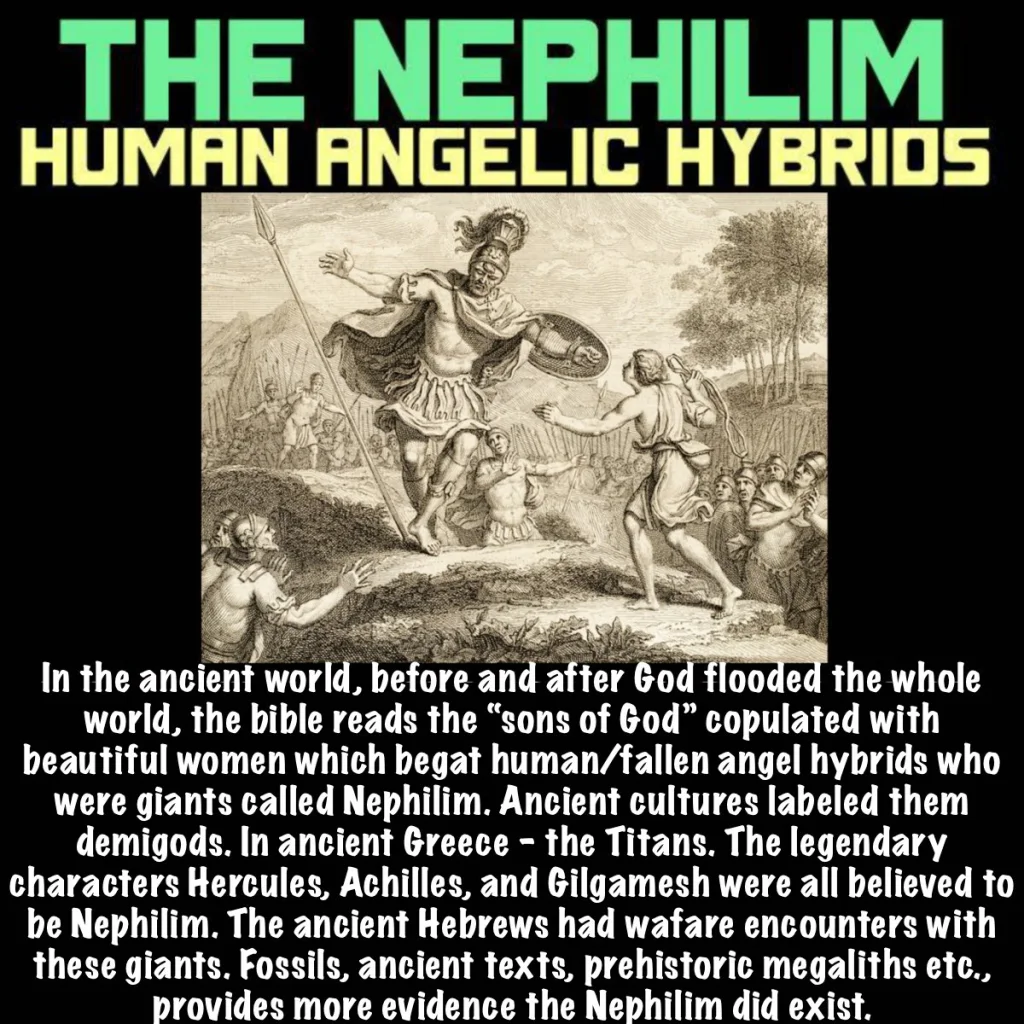
Words cast spells. That’s why they call it “spelling.”
You watch television “programs” because you are being programmed. You flip through “channels”, which comes directly from channeling, a term used in occult and witchcraft practices. These words are not random, they are part of a language of frequency and control.
In occult traditions, the word “media” is the plural of “medium”, from Latin meaning “middle” or “intermediary”. In spiritual terms, a medium is a conduit, a bridge between the physical and non-physical worlds.
So, what is media? It’s the modern-day seance. It’s your TV, phone, and computer, all acting as occult devices, not just for communication, but for spirit programming, subconscious rewriting, and energy harvesting.
Let’s break down a few analogies:
-
A medium in a séance translates spiritual static into coherent messages. A television or radio does the same thing with frequency.
-
A mirror mask both reveals and conceals. Media reflects collective consciousness, but also hides the truth behind archetypal distractions.
-
In Hermeticism, Mercury (Hermes) is the god of transitions, messages, and boundary-crossing. He is the archetype of all media, and his staff, the caduceus, with its twin serpents, mirrors the dual nature of broadcast and reception.
In alchemy, Sulfur, Mercury, and Salt represent soul, spirit, and body. Mercury, the medium, is the carrier, the messenger, the bridge between extremes. This is exactly how news, culture, and entertainment are used. They move emotional energy, plant belief systems, and shape consciousness.
So when you hear phrases like “programming” or “mass communication”, understand that they are not metaphors. They are literal. The Media Matrix is a spiritual, technological, and psychological system designed to manipulate the minds of the masses, a spell that is cast over the world using symbols, numbers, and words.
And once you start seeing the code, it becomes impossible to unsee it.
Programming Through Mass Media
Mass media refers to various forms of communication created to reach the broadest audience possible. These include television, film, radio, newspapers, magazines, books, music, video games, and the internet. Over the last hundred years, numerous studies have explored how mass media impacts society, all aiming to find the most effective ways to influence public behavior. These efforts eventually led to the development of the field of Communications, which today plays a major role in marketing, political messaging, and public relations. Mass communication can serve as a vital instrument in maintaining a functioning democracy, yet it can just as easily be used to sustain a dictatorship. Its effect depends entirely on how it is applied.
In the preface to A Brave New World, written in 1958, Aldous Huxley offers a bleak assessment of the direction society is heading. He suggests that an invisible and impersonal force, controlled by a powerful elite, is guiding humanity through calculated manipulation.
“Impersonal forces over which we have almost no control seem to be pushing us all in the direction of the Brave New Worldian nightmare, and this impersonal pushing is being consciously accelerated by representatives of commercial and political organizations who have developed a number of new techniques for manipulating, in the interest of some minority, the thoughts and feelings of the masses.”
– Aldous Huxley, Preface to A Brave New World
His bleak outlook is not merely a theory or an exaggerated fear. It is a well-documented reality found within some of the most significant research ever conducted on mass media. Below are a few examples:
Elite Thinkers
Walter Lippmann
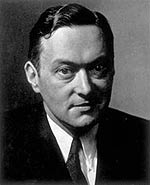
Walter Lippmann, a prominent American intellectual, author, and two-time Pulitzer Prize recipient, introduced one of the earliest explorations of how mass media could be used in America. In his 1922 work Public Opinion, Lippmann likened the general population to a “great beast” and a “confused herd” that required direction from a ruling class. He referred to this elite group as “a specialized class whose interests reach beyond the locality,” made up of professionals, technocrats, and administrators. These “elites” would serve as a system of knowledge designed to bypass what Lippmann saw as democracy’s fundamental flaw, the unrealistic belief in the “omnicompetent citizen.” The disoriented herd had a role to play: to observe rather than participate in civic life. In contrast, real engagement was reserved for “the responsible man,” someone far removed from the average citizen.
In Lippmann’s view, mass media and propaganda were essential tools for elites to guide society without resorting to force. A central concept he put forth was the “manufacture of consent,” which refers to shaping public opinion in such a way that the public willingly supports the elite’s goals. He believed the average person lacked the capacity to make informed decisions about complex issues. For that reason, the elite should make decisions in the public’s “best interest” and then use media to sell those decisions to the masses.
“That the manufacture of consent is capable of great refinements no one, I think, denies. The process by which public opinions arise is certainly no less intricate than it has appeared in these pages, and the opportunities for manipulation open to anyone who understands the process are plain enough… As a result of psychological research, coupled with the modern means of communication, the practice of democracy has turned a corner. A revolution is taking place, infinitely more significant than any shifting of economic power… Under the impact of propaganda, not necessarily in the sinister meaning of the word alone, the old constants of our thinking have become variables… It is no longer possible, for example, to believe in the original dogma of democracy; that the knowledge needed for the management of human affairs comes up spontaneously from the human heart… It has been demonstrated that we cannot rely upon intuition, conscience, or the accidents of casual opinion if we are to deal with the world beyond our reach.”
— Walter Lippmann, Public Opinion
It’s worth noting that Lippmann was one of the founding members of the Council on Foreign Relations (CFR), which is widely considered the most powerful think tank influencing foreign policy today. That connection gives insight into how the elite class views the purpose of media control.
“Political and economic power in the United States is concentrated in the hands of a ‘ruling elite’ that controls most of U.S.-based multinational corporations, major communication media, the most influential foundations, major private universities, and most public utilities. Founded in 1921, the Council on Foreign Relations is the key link between large corporations and the federal government. It has been called a ‘school for statesmen’ and comes close to being an organ of what C. Wright Mills has called the Power Elite — a group of men, similar in interest and outlook shaping events from invulnerable positions behind the scenes. The creation of the United Nations was a Council project, as well as the International Monetary Fund and the World Bank.”
— Steve Jacobson, Mind Control in the United States
Prominent members of the CFR today include David Rockefeller, Dick Cheney, Barack Obama, Hillary Clinton, Pastor Rick Warren, and CEOs from companies such as CBS, Nike, Coca-Cola, and Visa.
Carl Jung
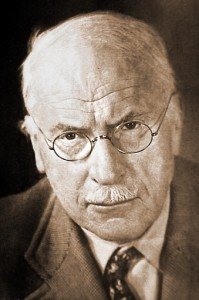
Carl Jung, the pioneer behind analytical psychology—also known as Jungian psychology—focused on exploring the human psyche through avenues like dreams, mythology, religion, symbols, art, and philosophy. The Swiss psychiatrist laid the foundation for numerous psychological concepts widely recognized today, including Archetypes, Complexes, the Persona, the Introvert/Extrovert dynamic, and the notion of Synchronicity. His deep fascination with esoteric and mystical subjects was likely influenced by his family’s occult roots. His grandfather, Carl Gustav Jung, was not only a committed Freemason but also served as Grand Master. Jung also discovered that some of his ancestors were affiliated with the Rosicrucians. This lineage might explain his extensive studies of both Eastern and Western mysticism, astrology, alchemical traditions, and symbolic language.
One of his most significant and often misinterpreted ideas was the Collective Unconscious.
“My thesis, then, is as follows: In addition to our immediate consciousness, which is of a thoroughly personal nature and which we believe to be the only empirical psyche (even if we tack on the personal unconscious as an appendix), there exists a second psychic system of a collective, universal, and impersonal nature which is identical in all individuals. This collective unconscious does not develop individually but is inherited. It consists of pre-existent forms, the archetypes, which can only become conscious secondarily and which give definite form to certain psychic contents.”— Carl Jung, The Concept of the Collective Unconscious
Jung proposed that the existence of shared mythological characters and universal symbols across ancient cultures serves as evidence for this collective unconscious. These archetypes appear to be hardwired into the human psyche, and when we come into contact with such symbols, we often respond to them instinctively—even if we have no conscious knowledge of their deeper meaning.
This innate reaction is why esoteric symbols can have such a powerful influence. Mass media scholars, including Edward Bernays, recognized how tapping into these subconscious symbols could be used to shape and control both personal and collective thought on a large scale.
Edward Bernays

Edward Bernays, often referred to as the “father of public relations,” applied psychological principles developed by his uncle, Sigmund Freud, to influence and steer public behavior on a subconscious level. Like Walter Lippmann, Bernays believed that the average person was irrational and driven by instinctive group behavior. In his view, democracy could only function properly if the masses were subtly guided by an unseen hand.
“The conscious and intelligent manipulation of the organized habits and opinions of the masses is an important element in democratic society. Those who manipulate this unseen mechanism of society constitute an invisible government which is the true ruling power of our country.
We are governed, our minds are molded, our tastes formed, our ideas suggested, largely by men we have never heard of. This is a logical result of the way in which our democratic society is organized. Vast numbers of human beings must cooperate in this manner if they are to live together as a smoothly functioning society.
Our invisible governors are, in many cases, unaware of the identity of their fellow members in the inner cabinet.”
— Edward Bernays, Propaganda
Bernays revolutionized the world of advertising and public influence. Through innovative campaigns, he played a major role in reshaping American culture—turning it into one that prioritized emotional gratification through consumption. Essentially, he laid the groundwork for modern consumerism, encouraging people to purchase not just out of need but for pleasure, identity, and status.
His impact was so profound that Life Magazine named him one of the 100 most influential Americans of the 20th century.
The Hidden Power of Red: Programming the Subconscious Through Media and Color
So, Edward Bernays was essentially the originator of modern propaganda. He was directly connected to his uncle, Sigmund Freud, but what most people don’t realize is that Netflix is also tied to the Bernays family line. Marc Bernays Randolph, the co-founder and first CEO of Netflix, carries the Bernays surname and is, in fact, Edward Bernays’s great-nephew.
Now, consider something many people overlook. Before any show or movie plays on Netflix, there’s a flash of colors that hits you right in the face, fast, vivid, and intense. It’s not just for show. That visual is designed to engage your subconscious mind, making it more receptive to subliminal programming. The final color that appears is red, and that’s no coincidence.
Red has been scientifically shown to command attention more strongly than any other color. Just before your mind relaxes into entertainment mode, red captures your focus, making you more susceptible to influence. That’s when subliminal messages and predictive programming slip in undetected. This is often referred to as lesser magic or the revelation of the method.
Studies confirm red’s “attentional advantage.” It catches the eye, even amid chaos. That’s why red is used in stop signs, warning labels, and emergency alerts. But it has a flip side: in settings like exams or performance evaluations, red has been linked to decreased achievement. In one experiment, students who saw a red booklet before an IQ test scored lower than those who saw a booklet in a neutral tone, despite not being consciously aware of the color difference. The red hue triggered anxiety and caution, subtly impairing performance. This reaction is tied to cultural associations between red and error, like red ink used to mark wrong answers.
Source: The Atlantic – “The Color Red Makes You Stronger, Faster”
In advertising, red is a psychological juggernaut. Marketers use it to spark emotions like urgency, desire, and excitement. It’s eye-catching and easy to remember. That’s why global brands rely on it: Netflix, Coca-Cola, McDonald’s, YouTube. Fast food companies especially favor red because it stimulates the appetite and raises the heart rate. Think of McDonald’s, KFC, Wendy’s, Pizza Hut—they all use red prominently.

Have you ever sat down to stream a show and suddenly felt like ordering food? That’s red at work, nudging your subconscious to eat, without a word.
In propaganda and psy-ops, red is often used to arouse collective emotion. Red flags, emblems, and banners are longstanding symbols in revolutionary and wartime messaging, inspiring loyalty, fervor, and courage. In the French Revolution, red flags stood for rebellion. In the 20th century, communist movements from Russia to China adopted red as their trademark. The Red Army, red star, red flags, all invoking blood, power, and revolution.
Chairman Mao went even further. His famed “Little Red Book” was not just propaganda; it was ritual. Covered in red and filled with slogans like “Chairman Mao is the red sun in our hearts,” it was a visual and ideological anchor. These were not design choices; they were strategic moves to channel emotion and unity.
In Western occult systems, red is tied to fire, the south, and Mars, symbols of passion, force, and action. Practitioners use red candles, robes, or objects in rituals related to love, energy, or strength. Stones like garnet or jasper serve as grounding tools, and herbs like chili and dragon’s blood resin are used for power and protection.
According to esoteric principles, red enhances assertive and energetic vibrations. In rituals, red wine or even blood may symbolize sacrifice or transformation. Red becomes a magical agent; writing sigils in red ink is believed to infuse them with vitality.
In alchemy, red holds the highest position. The final stage of the alchemical process is called “Rubedo,” or The Reddening. This phase symbolizes the union of spirit and matter and the creation of the Philosopher’s Stone, a symbol of enlightenment. Red represents the completion of the journey, visualized as the phoenix, the red rose, or the alchemical marriage of the red king and white queen.
Across media, marketing, politics, magic, and mysticism, red consistently emerges as the color of influence, power, and transformation. So the next time Netflix blasts that red streak across the screen before your show begins, take a moment to consider, what spell is being cast?
It’s quite interesting that Edward Bernays was born on November 22nd.

When you add 11 and 22 together, you get 33. That number is deeply connected to false flags and elite symbolism.

Bernays is widely recognized as the father of propaganda, and what is a false flag if not a strategic piece of propaganda?
November 22nd is also the same date President John F Kennedy was assassinated. That alone should raise eyebrows, but it gets even more revealing when we decode his name using gematria, the hidden language of the elite.
Eduard Bernays = 137 in English Ordinal Gematria. This cipher is based on the alphabet where A equals 1, B equals 2, C equals 3, and so on through Z which equals 26.

Now here’s the kicker. 137 is the 33rd prime number. So not only was Bernays born on 11/22, which adds up to 33, but his name is also connected to the 33rd prime number. That is no coincidence. That is a code.
And it does not stop there. When you take the Freemasonic compass, which is often shown as a 47 by 90-degree angle, and add the numbers together, you get 47 + 90 = 137. Once again, the same sacred number appears.
Spell Casting = 137 in English Ordinal
Spells Casted on the Audience = 137 in Reverse Reduction Gematria
That is what Edward Bernays was a master of. He was a black magician, a master of propaganda, a master of casting spells on the audience and putting them under hypnosis without their knowledge.
And his bloodline just so happens to be tied to the founding of Netflix, the biggest streaming platform in the world. Nothing about this is random. This is strategic manipulation hidden in plain sight.
Harold Lasswell

In the years 1939 to 1940, the University of Chicago became the setting for a series of confidential seminars focused on the subject of communications. These gatherings were underwritten by the Rockefeller Foundation and brought together many of the top minds in communication theory and sociology. One of the key figures in this elite group was Harold Lasswell, a prominent American political scientist known for his groundbreaking work in the field of propaganda and mass influence. Lasswell strongly believed that a true democracy couldn’t maintain itself unless a specialized class took charge of guiding public opinion through calculated propaganda strategies.
In his contribution to the Encyclopaedia of the Social Sciences, Lasswell argued that when ruling elites lack the brute strength to enforce compliance, they must lean on what he described as “a whole new technique of control,” namely, propaganda. He justified this by pointing out what he saw as the general “ignorance and stupidity” of the masses, cautioning against clinging to democratic ideals that claim ordinary people are best equipped to decide their own interests.
Lasswell invested much of his career in the study of content analysis, developing tools to measure how persuasive messaging worked. In his essay Contents of Communication, he emphasized the need to examine how frequently certain symbols appeared, the direction of influence they were intended to have, and the strength or emotional weight of those symbols.
He’s also known for his influential media communication model, often summarized as:
Who (says) What (to) Whom (in) What Channel (with) What Effect
This model helps break down media content to understand the intention behind it. Who created the piece? What message is being delivered? Who is the audience? What medium is being used? And what is the intended outcome—be it to inform, to sell, or to persuade?
To illustrate this model, consider a music video by Rihanna. WHO: The production company, such as Vivendi Universal; WHAT: Pop singer Rihanna and her performance; TO WHOM: Viewers aged 9 to 25; WHAT CHANNEL: A highly produced music video; and WHAT EFFECT: Promoting the artist, selling the music, and shaping her public persona along with any embedded messaging.
At TruthMafia.com, our breakdowns of popular media always focus on who’s really behind the curtain pulling the strings. We often refer to this controlling class as the “Illuminati”—not in the cartoonish or fictional sense, but in recognition of their ties to hidden societies and ancient occult systems. I reject the phrase “conspiracy theory” when describing this manipulation of mass consciousness. If the evidence of elite control and symbolic programming is out in the open, how can it still be dismissed as just theory?
There was a time when mainstream culture reflected a wide range of voices, perspectives, and creative expression. But over time, as major media companies merged and consolidated, we’ve seen a steady flattening of that diversity. Now, much of the entertainment industry feels cookie-cutter. Ever notice how today’s music tends to blur together or how blockbuster films follow the same formula? This isn’t just a coincidence—it’s part of a larger pattern:
Media Ownership
As shown in the chart above, the number of companies controlling the majority of U.S. media dropped dramatically, from 50 to just 5 in under two decades. Below is a closer look at the dominant media giants operating across the globe today and the assets they control.
1. AOL Time Warner
“The list of assets held by AOL Time Warner spans ten typed pages and includes 292 distinct businesses and subsidiaries. Among these are twenty-two joint ventures with other major corporations involved in media, such as 3Com, eBay, Hewlett-Packard, Citigroup, Ticketmaster, American Express, Homestore, Sony, Viva, Bertelsmann, Polygram, and Amazon.com. Notable wholly owned assets include Book-of-the-Month Club, Little, Brown publishers, HBO and its seven channels, CNN with its multilingual and niche offerings, Road Runner, Warner Brothers Studios, Weight Watchers, Popular Science, and fifty-two different record labels.”
—Ben Bagdikian, The New Media Monopoly
AOL Time Warner owns:
-
64 magazines, including Time, Life, People, MAD Magazine, and DC Comics
-
Film production and distribution companies such as Warner Bros, New Line, and Fine Line Features
-
More than 40 record labels, including Warner Bros, Atlantic, and Elektra
-
A wide range of TV channels like WB Networks, HBO, Cinemax, TNT, Cartoon Network, and CNN
-
Artists such as Madonna, Sean Paul, and The White Stripes
2. Viacom
Viacom controls:
-
Major networks like CBS, MTV, MTV2, UPN, VH1, Showtime, Nickelodeon, Comedy Central, TNN, CMT, and BET
-
Film studios including Paramount Pictures, Nickelodeon Movies, and MTV Films
-
Blockbuster Video retail chain
-
1800 cinema screens through Famous Players
3. The Walt Disney Company
“Disney’s ownership of a hockey team named The Mighty Ducks of Anaheim barely scratches the surface of its empire. At its core remains Hollywood, where it operates eight studios and distributors: Walt Disney Pictures, Touchstone Pictures, Miramax, Buena Vista Home Video, Buena Vista Home Entertainment, Buena Vista International, Hollywood Pictures, and Caravan Pictures.
The company also owns eight book imprints under Walt Disney Company Book Publishing and ABC Publishing Group, seventeen magazines, and the ABC Television Network, which includes ten stations in major markets. Add to that thirty radio stations, eleven cable networks like Disney Channel, ESPN (jointly), A&E, and the History Channel, plus thirteen international TV channels, global production units, and seventeen internet platforms such as ABC’s digital properties, ESPN.sportszone, NFL.com, NBAZ.com, and NASCAR.com. Its music portfolio includes labels like Buena Vista, Lyric Street, and Walt Disney Records. Disney has also adapted its movies into successful live theater productions, including The Lion King, Beauty and the Beast, and King David.”
—Ibid
Disney owns:
-
Networks like ABC, Disney Channel, ESPN, A&E, and History Channel
-
Film studios including Walt Disney Pictures, Touchstone, Hollywood Pictures, Miramax Film Corp, Dimension, and Buena Vista International
-
Musical acts such as Miley Cyrus, Selena Gomez, and the Jonas Brothers
4. Vivendi Universal
Vivendi controls:
-
Over a quarter of U.S. music sales with labels such as Interscope, Geffen, A&M, Island, Def Jam, MCA, Mercury, Motown, and Universal
-
Film companies including Universal Studios, Studio Canal, Polygram Films, and Canal+
-
Numerous internet and mobile companies
-
Artists like Lady Gaga, The Black Eyed Peas, Lil Wayne, Rihanna, Mariah Carey, and Jay-Z
5. Sony
Sony owns:
-
Movie studios like Columbia Pictures, Screen Gems, and Sony Pictures Classics
-
Fifteen percent of the U.S. music market is through labels such as Columbia, Epic, Sony, Arista, Jive, and RCA Records
-
Artists including Beyonce, Shakira, Michael Jackson, Alicia Keys, and Christina Aguilera
When a small number of companies control the entire entertainment landscape, the range of ideas and perspectives reaching the public becomes narrow. This consolidation makes it easier for a single narrative to dominate across platforms—for example, when the claim that Iraq had weapons of mass destruction was repeated endlessly across all outlets.
Nearly every company mentioned above is ultimately owned by BlackRock.
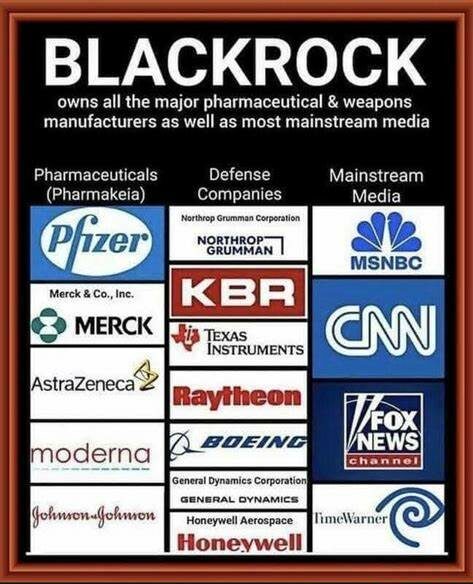
The Web of Influence: How BlackRock Controls Media, Pharma, and War
BlackRock owns a majority stake in most major media corporations, and it doesn’t stop there. They also hold substantial shares in the largest pharmaceutical companies and weapons manufacturers in the world. That means the same entity profiting from the wars we’re dragged into is also cashing in on the medicine we’re sold afterward, and the media that pushes the whole narrative.
Look at the pharmaceutical companies under their umbrella: Merck, AstraZeneca, and Moderna. Now pair that with major defense contractors like Northrop Grumman, Honeywell Aerospace, and General Dynamics. Then throw in media outlets like MSNBC and Time Warner. What you’ve got is one beast with many heads.
So ask yourself, when mainstream media sells you a war or floods the airwaves with fear, who benefits? When that same media pumps out commercials for pharmaceuticals late at night, who profits again? It’s the same handful of mega-corporations behind it all, and BlackRock holds the strings.
In most parts of the world, advertising pharmaceutical drugs directly to the public is illegal. But in the United States, it’s not only legal, it’s standard. That means the media, also owned by BlackRock, is being paid to push pills, influence perception, and keep the machine moving.
Now, think back to the COVID era. You might have thought you had a choice between different vaccines, but the truth is, they were all funded and backed by the same global investment giants. BlackRock had its hands in every single one. So while it seemed like a variety of options, it was really just one plan, controlled by the same ruthless players who benefit from your fear, your illness, and your obedience.
The Standardization of Human Thought

The Standardization of Human Thought Through Mass Media
The consolidation of media companies in recent decades has created a tight-knit oligarchy of powerful conglomerates. The TV shows we watch, the music we hear, the films we enjoy, and the newspapers we read are almost entirely produced by just five massive corporations. The owners of these media giants are closely linked to the world’s elite, and in many cases, they are the elite. By controlling nearly all major channels of communication, these corporations can impose a single, unified worldview, resulting in the uniformity of human thought.
Even subcultures or seemingly rebellious trends often turn out to be curated extensions of mainstream narratives. The media industry manufactures its own rebels, figures who may appear unconventional but ultimately uphold the dominant system and rarely challenge its core ideologies. Genuine outsiders, artists, or thinkers who do not align with approved ideas are systematically ignored or excluded by these conglomerates, rendering them nearly invisible to the public. Meanwhile, narratives deemed acceptable are heavily promoted until they become accepted social norms.
Edward Bernays recognized the powerful role of film in shaping public consciousness as early as 1928:
“The American motion picture is the greatest unconscious carrier of propaganda in the world today. It is a great distributor for ideas and opinions. The motion picture can standardize the ideas and habits of a nation. Because pictures are made to meet market demands, they reflect, emphasize and even exaggerate broad popular tendencies, rather than stimulate new ideas and opinions. The motion picture avails itself only of ideas and facts which are in vogue. As the newspaper seeks to purvey news, it seeks to purvey entertainment.”
— Edward Bernays, Propaganda
Concerns about the media’s role in diminishing individual freedom were raised in the 1930s by thinkers of the Frankfurt School, including Theodor Adorno and Herbert Marcuse. They outlined three key dangers of the culture industry:
-
Reducing individuals to passive spectators, limiting personal freedom, and rational thought
-
Replacing genuine self-awareness with the comfort of conformity and passive acceptance
-
Encouraging escapism as a way to avoid the harsh realities of life
In today’s world, escapism is amplified through online gaming, immersive films, and advanced home entertainment. Audiences consistently seek the most advanced forms of amusement, produced only by the largest media corporations. These productions are filled with calculated messages and symbols that amount to propaganda wrapped in entertainment. Modern propaganda doesn’t rely on coercion. Instead, it’s enjoyable, voluntarily consumed, and even sought after by audiences conditioned to embrace it.
Aldous Huxley foresaw this transformation:
“In regard to propaganda, the early advocates of universal literacy and a free press envisaged only two possibilities: the propaganda might be true, or it might be false. They did not foresee what in fact has happened, above all in our Western capitalist democracies — the development of a vast mass communications industry, concerned in the main neither with the true nor the false, but with the unreal, the more or less totally irrelevant. In a word, they failed to take into account man’s almost infinite appetite for distractions.”
— Aldous Huxley, Preface to A Brave New World
A single piece of media might not have a significant impact on its own. However, mass media as a whole shapes the very environment we live in. It determines what is normal, acceptable, and worthy of attention, while anything outside those boundaries is marginalized. Just as horses wear blinders to stay focused, the public is conditioned to see only what the media intends.
Jacques Ellul explained it this way:
“It is the emergence of mass media which makes possible the use of propaganda techniques on a societal scale. The orchestration of press, radio and television to create a continuous, lasting and total environment renders the influence of propaganda virtually unnoticed precisely because it creates a constant environment. Mass media provides the essential link between the individual and the demands of the technological society.”
— Jacques Ellul
One of the key reasons mass media is so effective is the enormous body of research on cognitive science and human behavior that informs it.
Manipulation Techniques
Publicity is the strategic management of how the public perceives a subject. These subjects include people, products, organizations, or creative works. The drive to market and sell ideas has led to extensive research in psychology, cognitive science, sociology, semiotics, linguistics, and more.
Marshall McLuhan observed:
“No group of sociologists can approximate the ad teams in the gathering and processing of exploitable social data. The ad teams have billions to spend annually on research and testing of reactions, and their products are magnificent accumulations of material about the shared experience and feelings of the entire community.”
— Marshall McLuhan, The Extensions of Man
The results of this research are applied to every aspect of media, from commercials and films to music videos and social media. Big-budget content is crafted to strategically influence both individuals and the collective public. Every image, sound, and symbol is designed to elicit a specific emotional response.
Jacques Ellul elaborated:
“It is with knowledge of the human being, his tendencies, his desires, his needs, his psychic mechanisms, his automatisms as well as knowledge of social psychology and analytical psychology that propaganda refines its techniques.”
— Jacques Ellul, Propagandes (free translation)
Modern propaganda rarely appeals to reason or logic. It targets our base instincts to provoke emotional, often irrational, reactions. If people made every decision logically, they wouldn’t buy half the things they own. For example, ads targeting women often feature children, not by coincidence. Research shows these images activate nurturing instincts and emotional sensitivity, making the viewer more receptive to the message.
By combining entertainment, marketing, and psychological tactics, media ensures the public not only consumes propaganda—it actually desires it.

Subliminal Perception and Sexual Symbolism in Media
Sex is everywhere in mass media because it’s one of the most effective tools to grab and hold attention. It taps directly into our primal instincts—the biological drive to reproduce. When triggered, this instinct can override rational thought, making the viewer more susceptible to emotional influence and suggestion.
Subliminal Perception
But what if those messages could reach us without our conscious awareness? That’s the basis of subliminal perception. The term subliminal advertising was first introduced in 1957 by American market researcher James Vicary, who claimed he could influence moviegoers to “drink Coca-Cola” and “eat popcorn” by flashing those messages on the screen for just milliseconds—too fast for the conscious mind to register.
“Subliminal perception is a deliberate process created by communications technicians, by which you receive and respond to information and instructions without being consciously aware of the instructions.”
— Steve Jacobson, Mind Control in the United States
This technique is frequently used in marketing, and we’ve all heard the phrase: sex sells.
While some experts dismiss subliminal advertising as ineffective or even label it an urban myth, its repeated use in media suggests otherwise. Those behind its implementation clearly believe in its influence. In fact, modern research has backed up its power, particularly when the messaging leans negative.
“A team from University College London, funded by the Wellcome Trust, found that [subliminal perception] was particularly good at instilling negative thoughts. ‘There has been much speculation about whether people can process emotional information unconsciously—for example, pictures, faces and words,’ said Professor Nilli Lavie, who led the research. ‘We have shown that people can perceive the emotional value of subliminal messages and have demonstrated conclusively that people are much more attuned to negative words.’”
— Source
One infamous example of subliminal messaging in politics occurred during George W. Bush’s 2000 campaign against Al Gore. In one of Bush’s television ads, the word “bureaucrats” appears on screen, and for just a split second, the last four letters, “rats,” flash independently, drawing subconscious attention and planting a negative emotional association.

Subliminal Messaging, Desensitization, and Predictive Programming
The discovery of subliminal manipulation—like the “RATS” flash in a Bush campaign ad—sparked public outcry. Although no specific U.S. laws prohibit subliminal messaging, the backlash was strong enough that the advertisement was pulled from circulation.
As covered in many Vigilant Citizen articles, subliminal and semi-subliminal messaging is regularly used in movies and music videos to deliver hidden messages and implant ideas in viewers’ minds without their conscious awareness.
Desensitization
In earlier eras, when drastic societal changes were introduced, the public often reacted with protest or even revolt. That’s because these changes were typically presented in a direct and abrupt fashion, making them easy to identify, evaluate, and oppose.
Today, those same shifts are introduced more subtly—through a process known as desensitization. When the elite wants to introduce an idea or policy that may go against the public’s best interest, they no longer announce it plainly. Instead, they condition the population to accept it slowly, repetitively, and under the guise of entertainment or progress.
Whether it’s a dystopian theme embedded into a movie plot, a controversial idea glamorized in a music video, or a news segment selling it as a necessary solution, the message is repeated until the population no longer resists. When the idea is finally introduced in real life, it is met with silence or indifference. This technique has roots in psychotherapy.
“The techniques of psychotherapy, widely practiced and accepted as a means of curing psychological disorders, are also methods of controlling people. They can be used systematically to influence attitudes and behavior. Systematic desensitization is a method used to dissolve anxiety so the patient (public) is no longer troubled by a specific fear, a fear of violence for example. […] People adapt to frightening situations if they are exposed to them enough.”
— Steven Jacobson, Mind Control in the United States
Predictive Programming
This same psychological manipulation appears in predictive programming, especially in science fiction. These works don’t merely entertain—they present a future the elite intends to create. Over time, repeated exposure causes these imagined realities to take root in the public’s subconscious. They begin to seem inevitable.
In the early 2000s, movies and media desensitized the public to endless war in the Middle East. Today, the same cultural channels are normalizing ideas like mind control, transhumanism, and global elite rule. These concepts, once fringe, are now woven into music videos, Hollywood blockbusters, and pop culture.
This gradual reveal is what occultist Alice Bailey described as the “externalization of the hierarchy”—a slow unveiling of those who have operated behind the scenes for centuries. Step by step, the hidden powers no longer hide. They simply program the masses to welcome them.
Occult Symbolism in Pop Culture

Occult Symbolism and the Hidden Language of Power
Contrary to the material covered above, documentation on occult symbolism is not easy to find, and that should come as no surprise. The word occult literally means hidden. It also implies knowledge that is reserved for the initiated, only shared with those deemed worthy of access. It’s not something taught in public schools, nor is it openly discussed in mainstream media. As a result, most of the general public sees it as either marginal or absurd.
Yet within occult circles, this knowledge is anything but laughable. It is revered as timeless and sacred. There is a long and traceable tradition of hermetic and occult teachings being passed down through secret societies, from the priesthood of ancient Egypt and Eastern mystics to the Knights Templar and today’s Freemasons. While it’s likely that much of the original depth has been lost over time, mystery schools have preserved their core framework: a system that is symbolic, ritualistic, and metaphysical in nature.
These elements were once central to ancient civilizations, but they’ve been largely stripped from modern society and replaced with a worldview rooted in pragmatic materialism. This shift has created a vast disconnect between the average pragmatic individual and the deeply ritualistic elite establishment.
“If this inner doctrine were always concealed from the masses, for whom a simpler code had been devised, is it not highly probable that the exponents of every aspect of modern civilization – philosophic, ethical, religious, and scientific – are ignorant of the true meaning of the very theories and tenets on which their beliefs are founded? Do the arts and sciences that the race has inherited from older nations conceal beneath their fair exterior a mystery so great that only the most illumined intellect can grasp its import? Such is undoubtedly the case.”
— Manly P. Hall, The Secret Teachings of All Ages
The “simpler code” crafted for the masses was once expressed through organized religion. Today, it has evolved into something more insidious: the Temple of Mass Media. This new institution preaches daily sermons on consumerism, spiritual emptiness, and radical individualism. These are the very qualities that hinder the development of a truly free and conscious human being, qualities once denounced by all major philosophical traditions.
So ask yourself: is a spiritually blind and mentally dulled population easier to mislead, manipulate, and control?
“These blind slaves are told they are ‘free’ and ‘highly educated’ even as they march behind signs that would cause any medieval peasant to run screaming away from them in panic-stricken terror. The symbols that modern man embraces with the naive trust of an infant would be tantamount to billboards reading, ‘This way to your death and enslavement,’ to the understanding of the traditional peasant of antiquity.”
— Michael A. Hoffman II, Secret Societies and Psychological Warfare

In Closing
This breakdown has explored not only the minds behind mass media theory—Lippmann, Bernays, Lasswell—but also exposed the very infrastructure that controls what we see, hear, and believe. The manipulation of public thought is not just a possibility. It is a documented, deliberate system engineered by those in power to keep the masses docile, distracted, and uninformed.
What you’ve just read isn’t based on speculation or paranoia. These were the stated intentions of the architects of modern propaganda. They believed, without apology, that the average person is incapable of independent thought and that true decision-making should rest with a hidden elite. They didn’t just suggest this—they wrote it, taught it, built systems around it, and their successors now broadcast it through every screen and speaker on the planet.
As this agenda continues unfolding, one thing becomes increasingly clear: ignorance isn’t a side effect of mass media—it’s the objective. A distracted, emotionally manipulated, spiritually detached public is easier to control. They don’t question. They consume. They follow trends rather than truth. Meanwhile, pop culture acts as the pacifier, keeping the herd entertained while the system reprograms reality.
That’s why I do what I do. Because once you see the code, you can’t unsee it. Once you spot the illusion, you’re no longer just a participant in the program—you become something more. You become the glitch.
“Reality is a code. I am the glitch that reveals its secrets.” – Tommy Truthful
Explore some of our other blogs and videos by clicking the links below. If you’re interested in getting a personal GEMATRIA decode to uncover your role in this simulated reality, you can click on the image below to book your session today. Until next time, my fellow truth seekers and decoders!
The Black Sun Freemasonic Doorknob Death Ritual
The 5G Apocalypse Top 10 Countries by Maximum Allowed 5G Exposure
The Joker archetype Decode LIVE 4-29-2025

